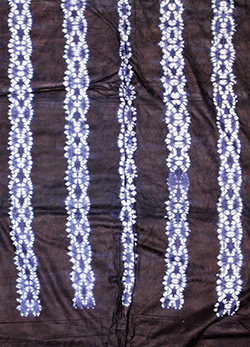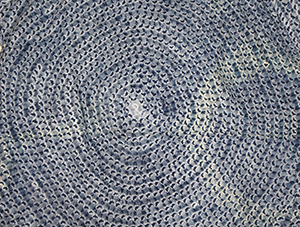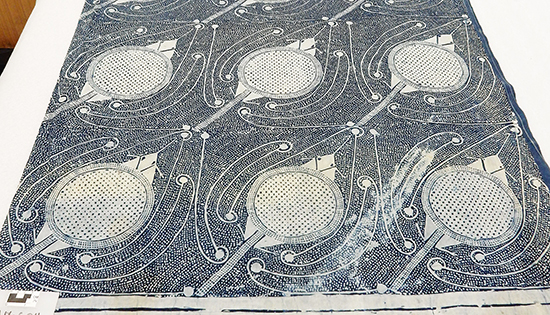Nigeria: Make a Yoruba Adire Cloth
Who are the Yoruba?
The Yoruba people are one of the largest ethnic groups in Africa. In fact, they are not a single group, but rather a collection of diverse people bound together by a common language, history, and culture. The Yoruba live in West Africa, mainly in Nigeria, Benin, Togo, and part of Ghana.
Yoruba people speak the Yoruba language. It is a tonal language where the same combination of vowels and consonants have different meanings depending on the pitch (whether they are pronounced with a high or a low voice) of the vowels. The Yoruba language has many dialects, but its speakers can all understand each other.
Adire Cloth
 Adire is a type of cloth created and worn by Yoruba women. It is a resist-dyed fabric, which means you do something to the fabric to prevent it from absorbing dye, like tie-dye.
Adire is a type of cloth created and worn by Yoruba women. It is a resist-dyed fabric, which means you do something to the fabric to prevent it from absorbing dye, like tie-dye.

This cloth from the Lam Museum collection shows the sheen created by beating it with a mallet after dyeing.
Cloths are usually prepared, and always dyed, by women. The dyeing is done in large earthenware dye pots which are partially sunk into the ground. Traditionally, adire was dyed indigo (dark blue) and it is still the most popular color. Indigo dye is made from indigo leaves or indigo grains. The leaves are ground with water and soda ash, cooked, and then soaked for days to create the color. Fabric is dipped into the dye, then pulled out and allowed to oxidize so it becomes the bright blue color. The more times a cloth is dipped the darker it will become. Sometimes after it had been dyed the cloth is beaten with a mallet so it has a sheen.
Adire cloth starts as a white piece of material. Before fabric is dyed, it is treated in a variety of ways to create patterns that are revealed after dyeing. There are three basic methods used to create adire cloth.

An adire oniko piece from the Lam Museum collection
The first method is called a raffia resist dye. Raffia is tied around the fabric to act as a resist, creating cloths known as adire oniko. A great variety of patterns can be produced using this method. Rocks and seeds can be tied into the fabric and the fabric can be twisted or folded then tied with raffia. After the fabric is dyed and the raffia is removed, the pattern is revealed.
The second method is called stitch resist, which uses sewing to resist the dye. The term adire alabare is used for this type of fabric. Both machine and hand sewing is used to produce patterns. After dying, the stitching is removed to reveal the pattern. If a sewing machine is used, that work is done by men.
The last method is called starch resist. Cloths decorated using cassava starch to resist the dye are known as adire eleko. Cassava starch is made by mixing ground cassava (a root vegetable) with water to make a thick paste. The paste is only applied to one side of the cloth so the underside is plain blue. The use of paste allows for a greater variety of patterns to be created. Starch can be applied through a stencil or painted on to the cloth freehand. Both cutting the stencil and using it are done by men. Once the paste is dry, the fabric is dyed. After dyeing, the cassava starch is scraped off revealing the pattern.

This cloth from the Lam Museum collection is dyed using the starch resist method.
Let’s Tie-Dye with Markers!
Before you begin to tie-dye check out this website on how to create different tie dye patterns: https://www.tiedyeyoursummer.com/techniques
You will need:
• White or light color T-shirt, pillowcase, socks, dish towels (or whatever else you’d like to dye). The item needs to be 100% cotton and washed and dried.
• Permanent markers (Sharpies, Bic)
• Rubbing Alcohol
• Rubber bands
• Spray bottle
• Bowl
• Eye dropper or spoon
• Cardboard
• Rubber gloves
Learn how to tie-dye with sharpies from the Medicine Hat Public Library:
If you’d like to see another tie dye method, check out this video from the Florida State University Library using food coloring.

